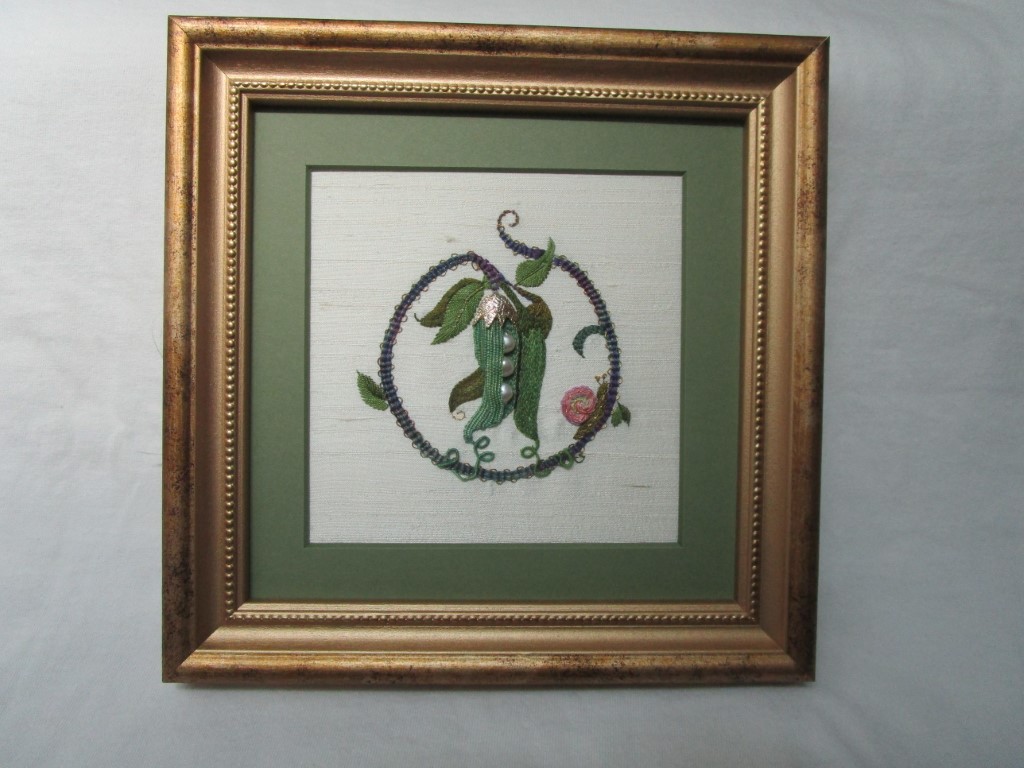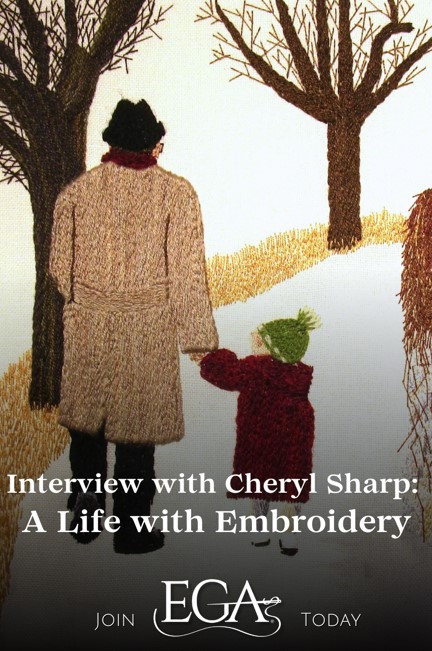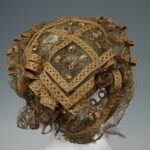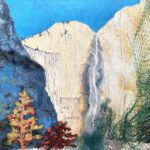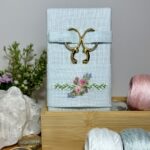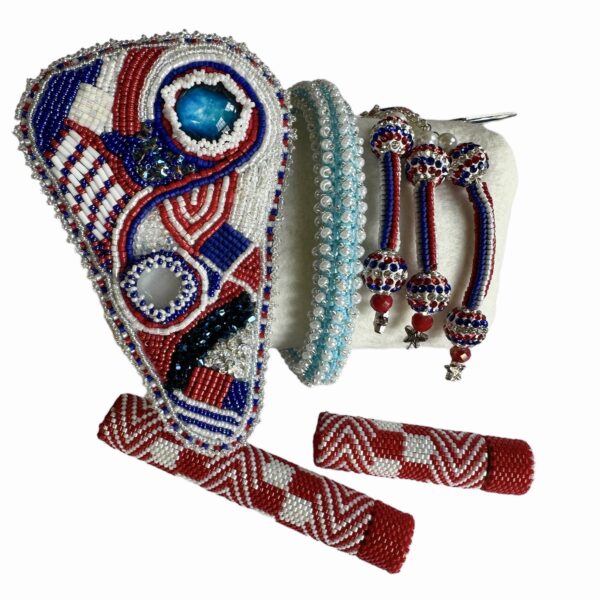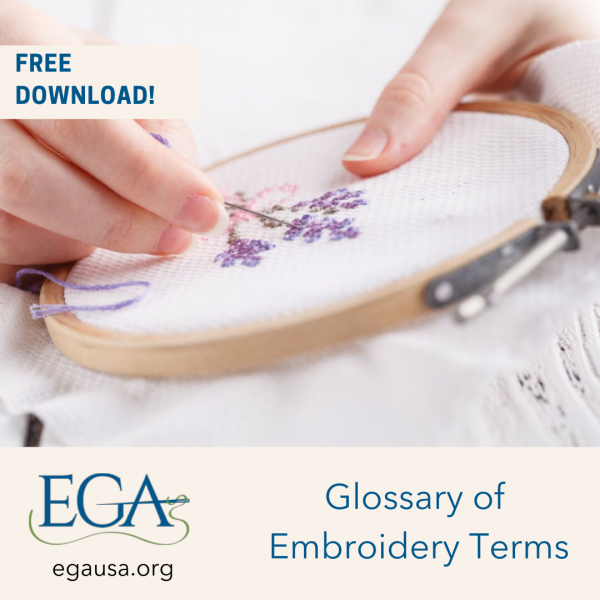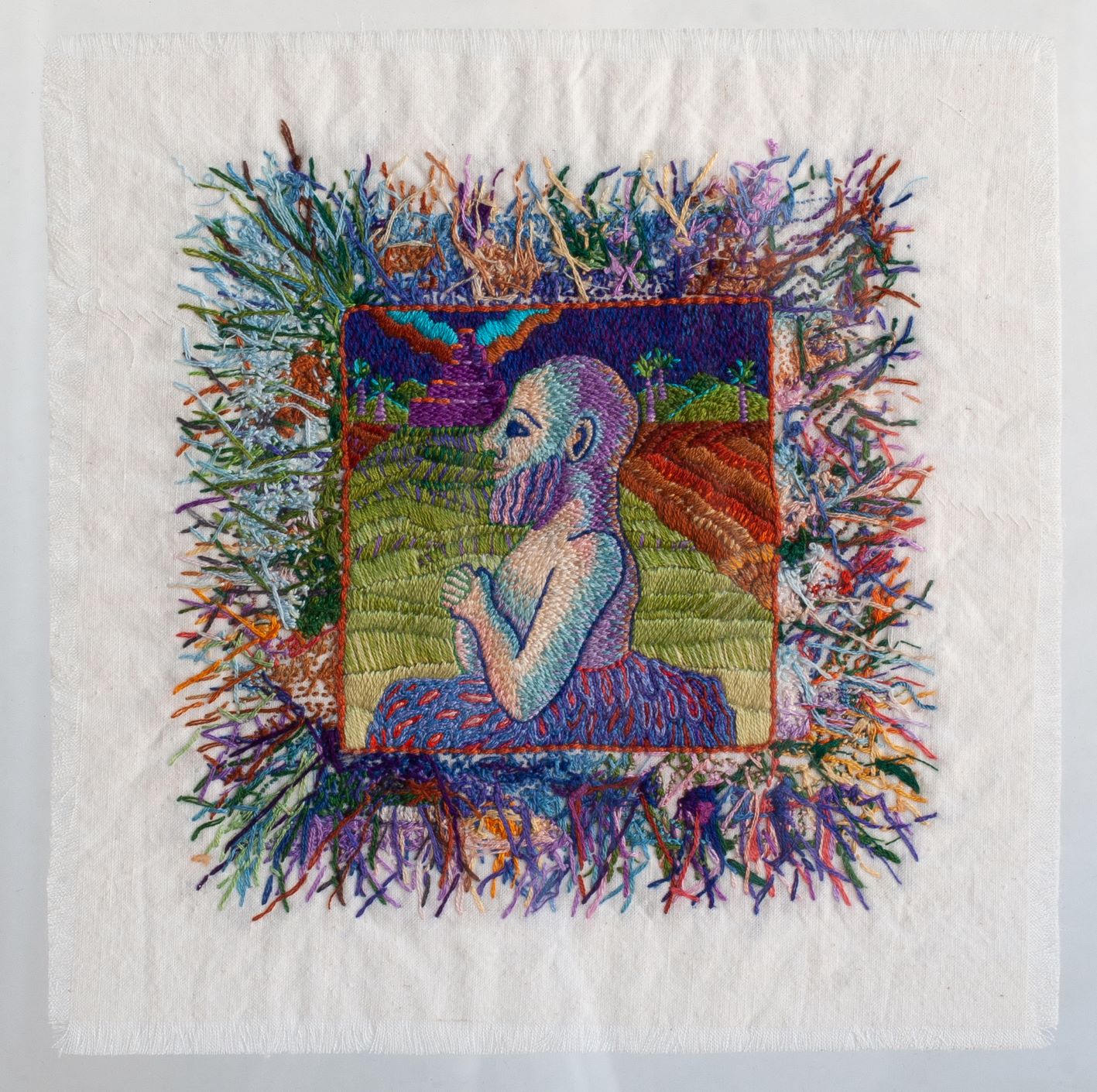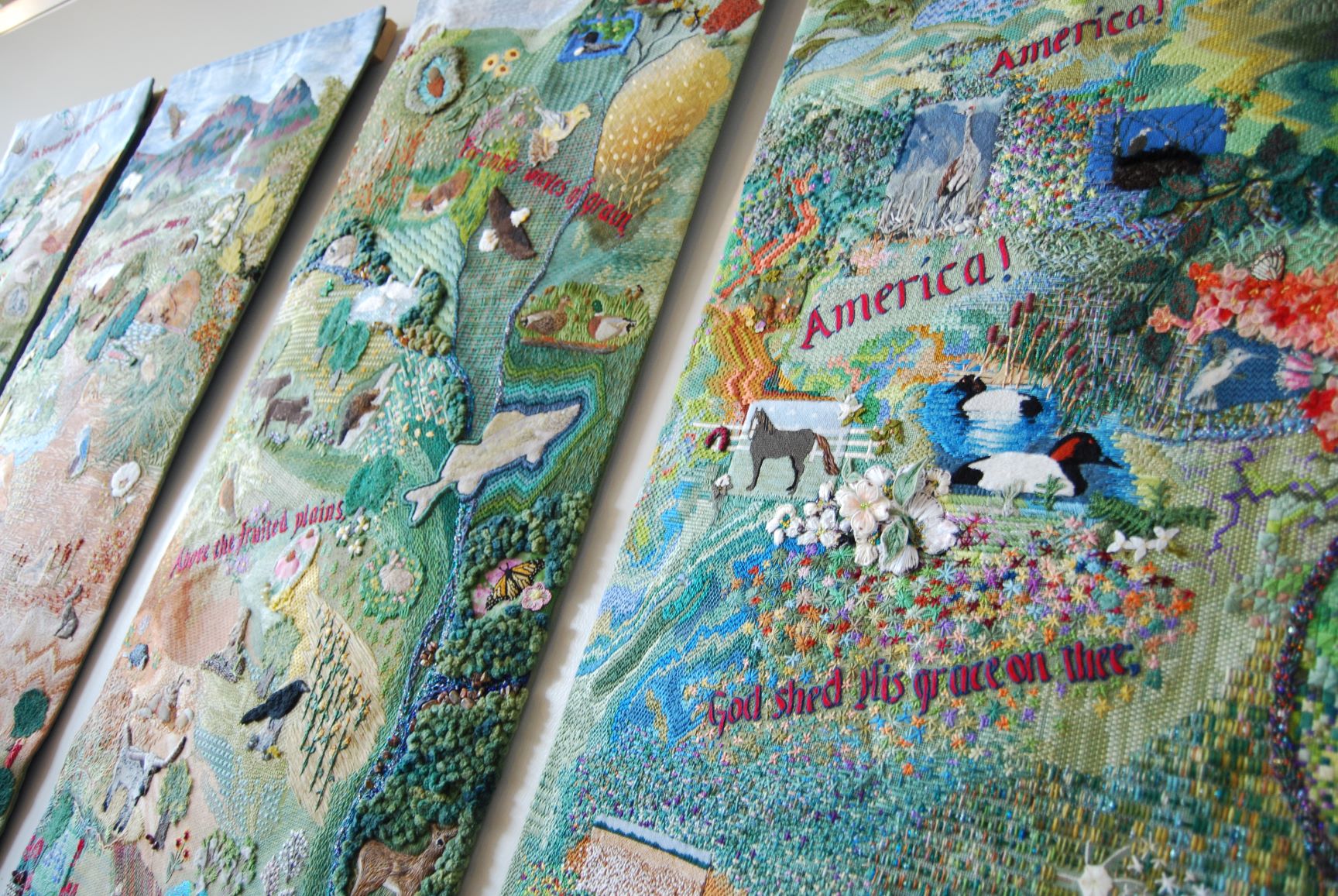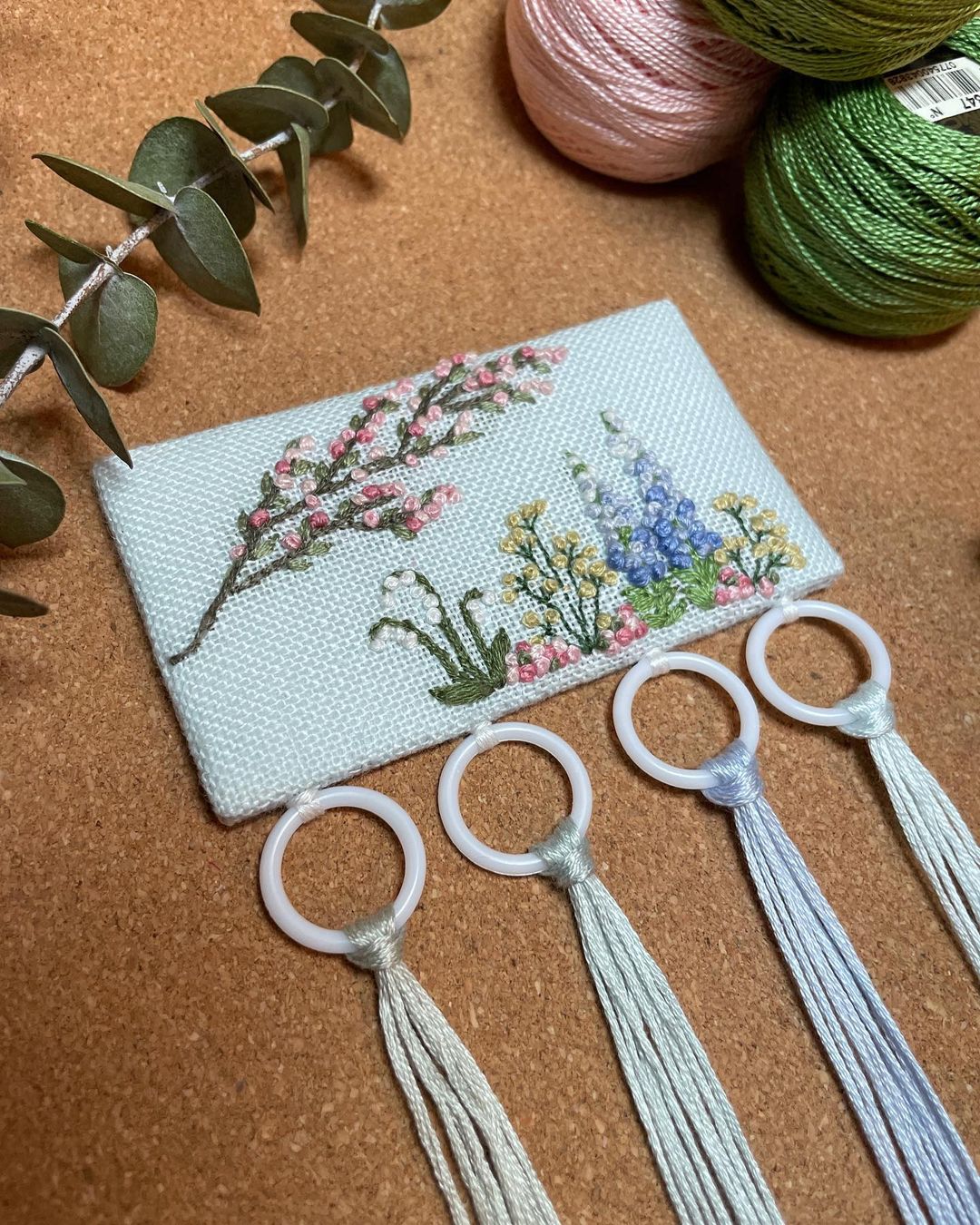Cheryl Sharp’s English Summer has been a featured Group Correspondence Course for some time now, and is currently a GCC Lightning Round for individual EGA members through August 31, 2025. However, the beginner-friendly surface embroidery course, which also teaches stitchers valuable lessons for preparing fabric, transferring designs, and setting up embroidery on stretcher bars, is set to retire at the end of 2025. We sat down with Cheryl to learn more about her history with embroidery, EGA, and the needlework community.
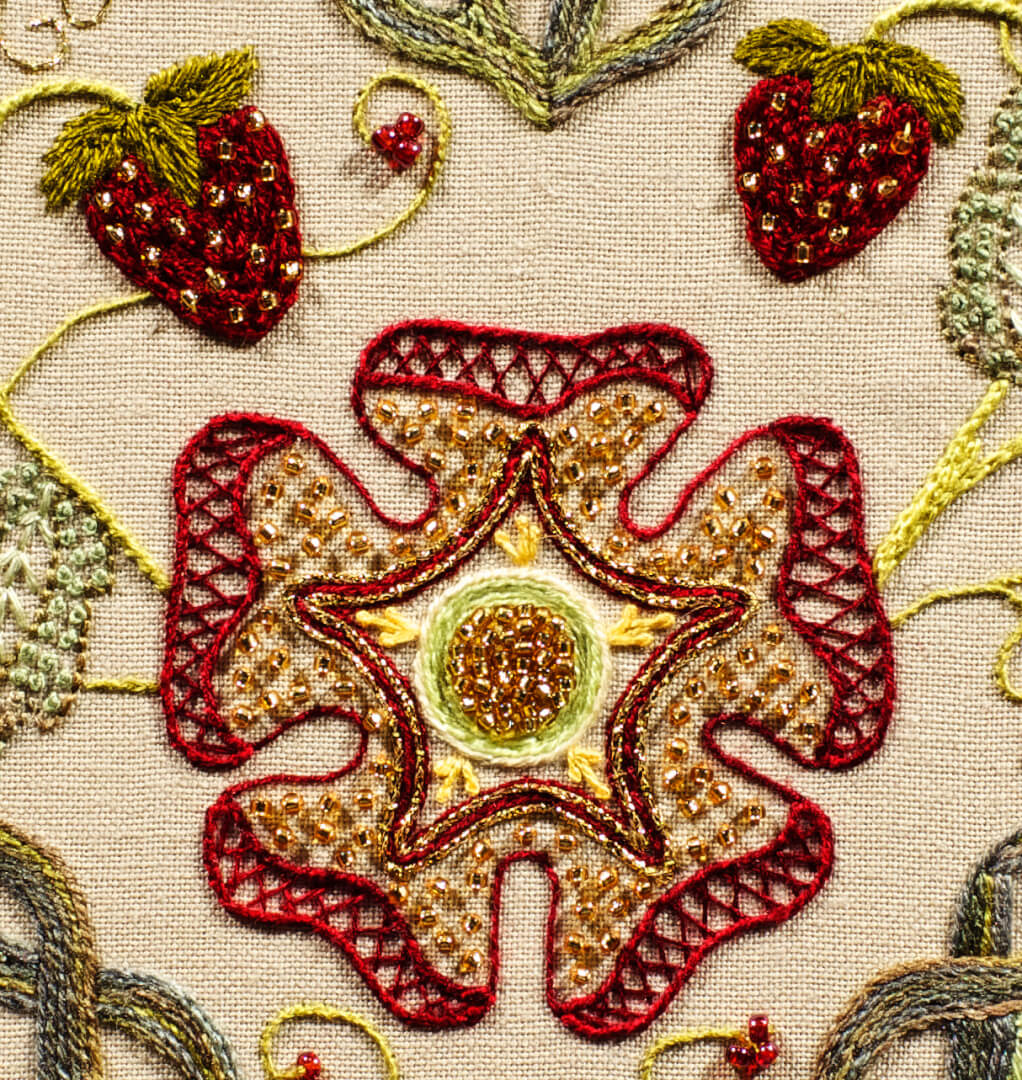
My mother was a member of EGA, ANG, and CAE (Council of American Embroiderers). She urged me to join CAE, but I had a different goal when I moved to Northern Virginia. I joined the weavers, spinners, and dyers in Potomac Craftsmen Guild because Wilcke Smith, whom I had been following for a decade, was coming to teach. We worked large stitches in yarn on an Army blanket. While the technique did not work for me, I enjoyed meeting Wilcke.
In 1981, I joined EGA and the 250 members of the Washington, D.C. Chapter. A couple of years later, after two exhibits, we had 500 members, and all of the great US and British teachers came to the chapter to give lectures and workshops. The energy was invigorating. I became the shop liaison, visiting 24 shops in two years.
I took class after class, enjoying them all, but I knew that I wanted to specialize. Ann Kurz (née Ann Strite) was a member who was already teaching. I asked her how she found “her” technique, and she said, “Cheryl, keep taking classes, and you will eventually know what you want to focus on.”
Meanwhile, I joined Potomac Craftsmen Gallery at the Torpedo factory in Alexandria, VA, where we displayed and sold our work. One day Dixie Rettig visited. She insisted that I join CAE and attend the seminar in Maryland. No one could say no to Dixie, so I joined, had the time of my life, met interesting, creative women, and led a tour of Washington, D.C. by moonlight.
CAE was known for classes in techniques in which you learned a process and incorporated it into your work. Just as my mother predicted, I loved it! When CAE was disbanded in the 1990s, EGA President Deanna Powell made a place for the members in Fiber Forum. I became a juried member and enjoyed their technique-based retreats for many years.
EGA offered a program that appealed to me called the Challenge. When Charlotte Miller was the chair, she picked the theme of “Choices” based on a poem by her son. I was beginning a new chapter of my life, and asked if I could change it to suit my own challenges. She said, “YES!”
I had taken a picture of my husband and his three-year-old granddaughter on a magical day in Switzerland as they walked away from me on the shore of Lake Geneva. I couldn’t get that image out of my mind; I knew I had to stitch it. As we were minutes away from leaving on a sailing trip, I grabbed fabric, sketched pencil lines, and painted part of the ground. I began stitching on the boat. The piece became Grandpa and me and it was used on the cover of the Education magazine.

Fourteen years later, I reconfigured the piece as Footsteps with my husband growing older and his granddaughter soon to be an adult. I see the pieces every day at opposite ends of a hallway, and they make me smile.
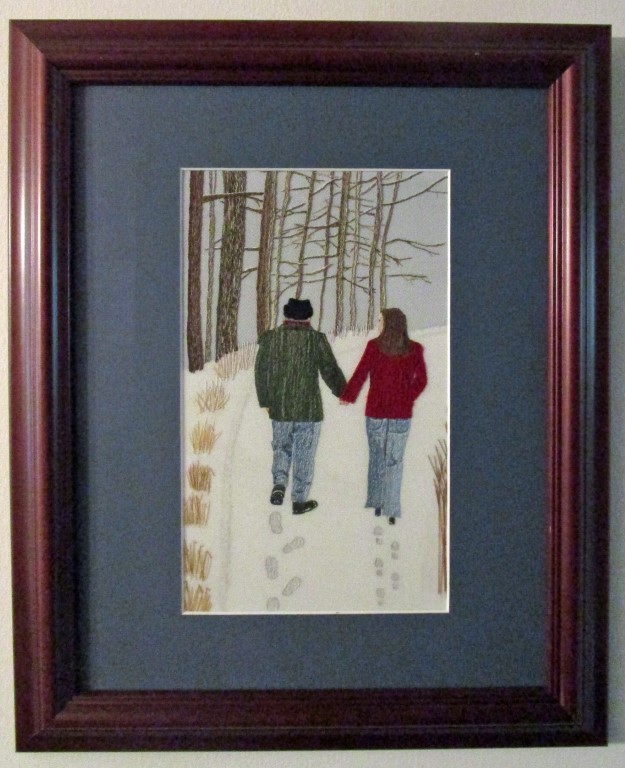
I consider myself a surface embroiderer. My first choice is crewel because the wool is so forgiving. I have had the best teachers—from Judy Jeroy to Marj Jones, Carol Currier, and Canby Robertson. Each has a different perspective and style. I also stitch a lot of stumpwork, which is on such a different scale with finer materials. I like the counterpoint between the two techniques.
In 2003, I met Michele Chavez, who had a portfolio of the finest drawings I had seen. She insisted she would recreate them in cross stitch, which I did not think would work. It was a long time before she announced that she wanted to sign up for Luan Callery’s complicated stumpwork GCC, having never done any surface embroidery. I taught her each technique, and Michele added her own special zing as she successfully finished the piece.
That was the beginning of our journey of designing together. At the time, I was a contributing editor for Needle Arts, and the editor, Cheryl Christian, often needed projects. I came up with a theme, Michele drew, and Lucy Edmison and Maggie Fraser joined us in stitching. Perhaps my favorite was three birds in crewel stitched in primary colors, at three skill levels.

When the Mid-Atlantic Region hosted the National Exhibit, they needed more embroideries to fill the museum space. Michele was interested in creature’s eyes. She developed small drawings of sea creatures, and we shared them with friends who stitched their favorite image. I framed them the same, and Fish Eyes were hung as a group. They attracted people of all ages who made a beeline across the room to see them.

One summer, Michele and I were bored, and I came up with the idea of doing a Group Correspondence Course. A heart is such a universal symbol that we used one as a frame and filled it with motifs we love. Probably the funniest moment we have had in our long friendship was the day we picked the threads. I can only imagine the mood we were in… the piece would have been called Summer Fiesta! Back to the needlework store we went for a more sophisticated palette, which we wanted on a background other than white. The result was English Summer.
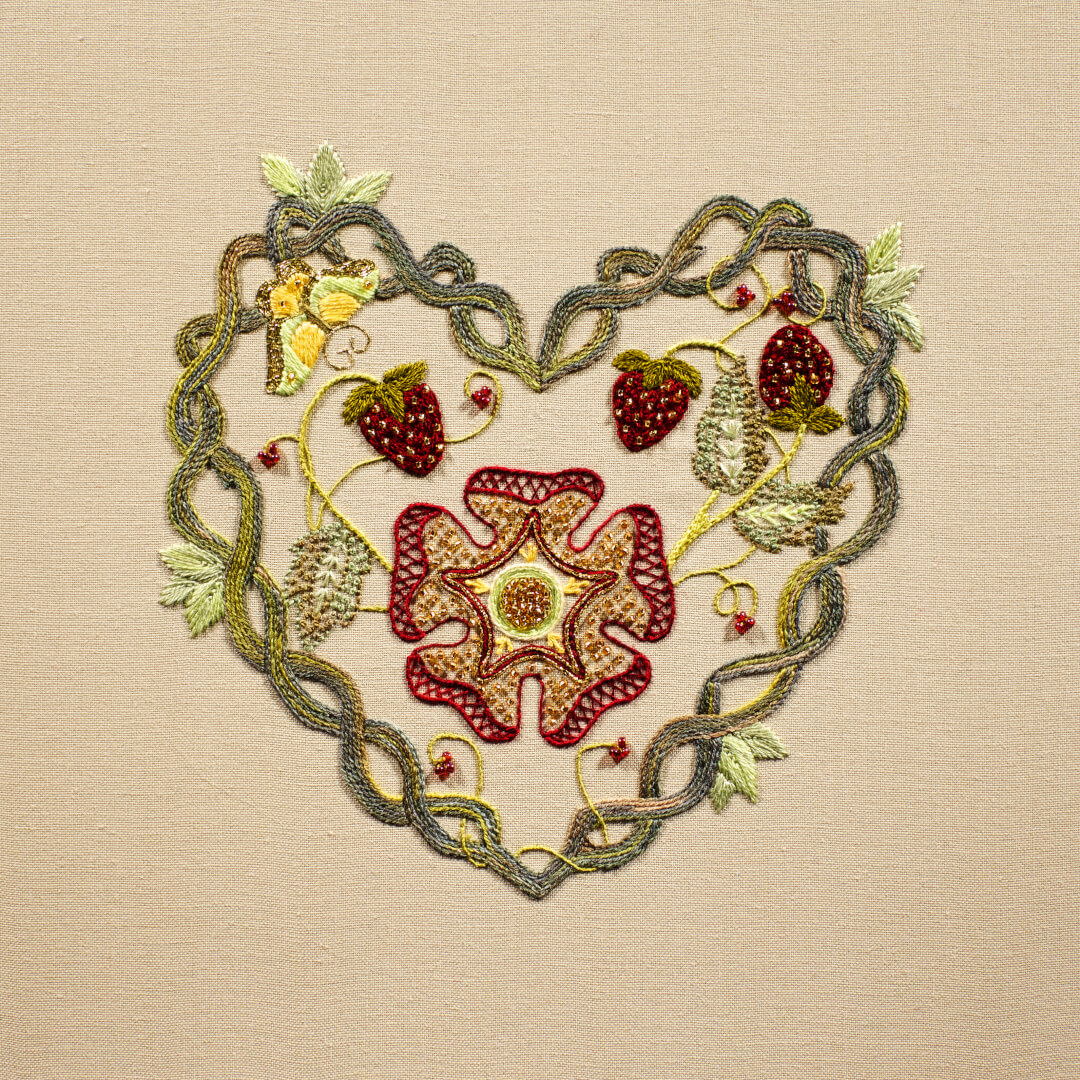
English Summer is in its final days, as I am withdrawing it at the end of the year. I wrote it at a beginning level because no one seems to be teaching how to set up a project, and there is such a need. Kathy Myers and I did a program for our chapter years ago called “Frame it up/Hoop it up,” to show how to set up canvaswork and surface embroidery. We intended to split the group in two, but they refused, not wanting to miss anything. There were so many questions about “things they had heard” that the program went overtime.
I am enjoying the Lightning Round students as several are true beginners, and I have had the opportunity to answer a lot of questions and share my knowledge.
The 17th National Exhibit was sponsored by our region in 2002. They had a fine committee but lacked a chairman. I felt changes needed to be made to invigorate the exhibit, and I was allowed to expand the participants beyond EGA members, making it a richer exhibit, so I accepted the job. Artists from Canada, India, Japan, and Georgia (formerly the Soviet Union) joined the talented artists from the US. And, more awards were made than in any previous exhibit. It was a wonderful experience.
I also spent several years as the captain of the linen guild for the Washington National Cathedral. With the enthusiastic help of many EGA members, we refilled the cupboards with communion linens.
For the past ten years, I have been pleased to use my lifetime of embroidery knowledge to further the textile program at Mount Vernon as a Curatorial Research Volunteer. Among the myriad of projects I have been involved in, Doreen Arnold, Ruth Franconeri, and Michele Chavez joined me in reproducing seven sections of Martha Washington’s bedhangings. I have documented our findings for the curators.
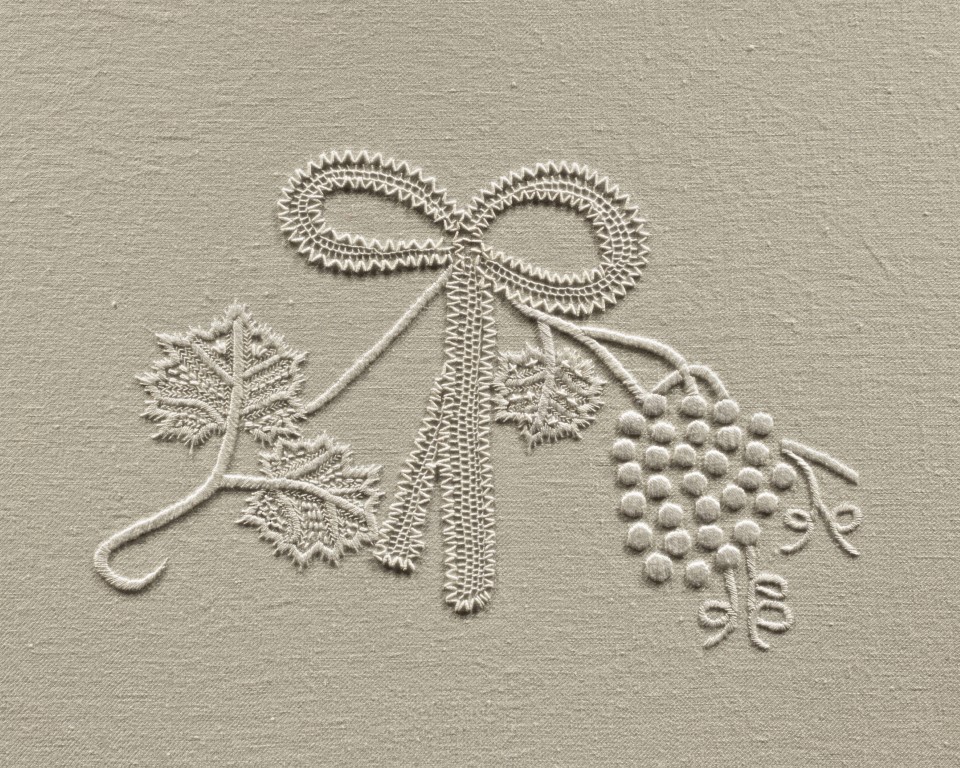
I am completing the reproduction of a needlebook and pincushion, and I have done extensive research into Berlin Woolwork for a report for the curators to further their knowledge of the George Washington portraits in that technique.
I have embraced opportunities to facilitate, organize, write, teach, learn, and research. I am grateful to have found the rich and diverse facets of EGA. And the best part is making friends.
